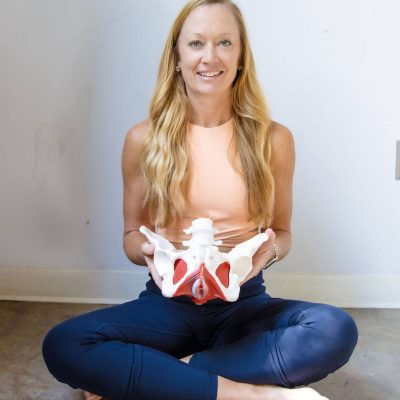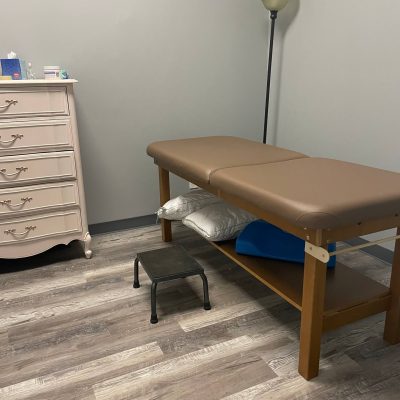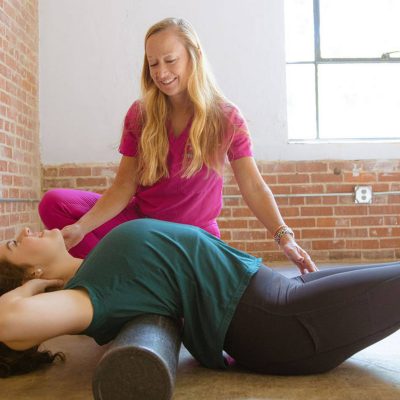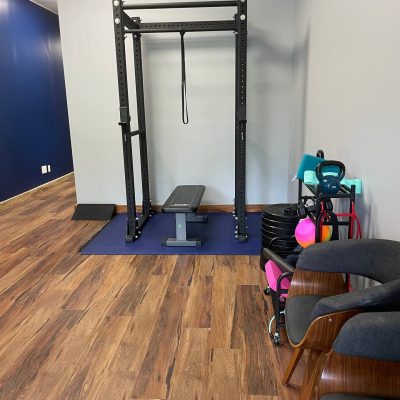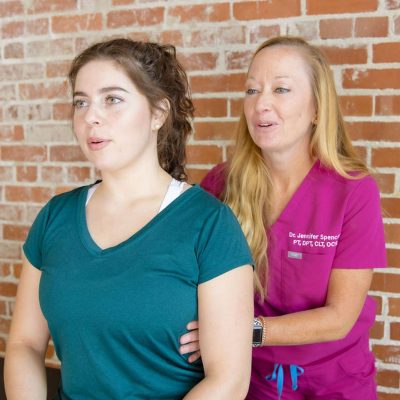By Erica Mitchell, PT, DPT
One of the most common things I hear from friends when they find out I treat pelvic floor dysfunction is “I’m so glad I had a c-section; I’ve saved my pelvic floor!” It’s my favorite time to ruin the party and educate them on how they need pelvic floor therapy just as much as someone who has had a vaginal delivery.
Your body has carried a baby for 9-10 months. There are a lot of musculoskeletal, hormonal, and visceral changes that happen when growing a baby. As your belly grows, your center of gravity often shifts posteriorly, your pelvis shifts anteriorly, your hips externally rotate, organs move up (or down), and you go through a rollercoaster of hormonal changes that can affect your body in the peri and postpartum period.
A majority of cesareans result from failed vaginal delivery. Typically that means a prolonged period of attempting to push the baby through the birth canal and ultimately having to go the cesarean route. The prolonged pressure on vaginal tissues and bearing down in an attempt to deliver a baby can have lasting effects on the pelvic floor – even if you ultimately don’t deliver vaginally. In this case you have the prolonged pressure and strain on vaginal tissues in addition to the abdominal musculature compromisation from the cesarean.
Your abdominal wall is compromised by c-section, so pressure management is key! After c-sections it’s important to learn how to effectively, safely, and appropriately engage your core to prevent excessive pressure through the abdominal wall or pelvic floor. Sometimes the weakness of the abdominals causes increased force down onto the pelvic floor with lifting or straining causing symptoms of heaviness, leakage, etc. The deep core muscles and pelvic floor muscles act as best friends; these muscles need to be firing together, something that needs to be retrained after pregnancy and delivery.
Post c-section, you’ll still go through postpartum changes, too. Examples of postpartum changes include laxity of tissues, thoracic pain from breastfeeding and pumping, lingering hip and back pain from pregnancy, postural changes, etc.
All of these issues are common but can be addressed and relieved with appropriate treatment and attention! Pelvic floor therapy can help with SI joint dysfunction, diastasis recti (separation of abdominal muscles from pregnancy), and general laxity of tissues from downward force of a whole human on your pelvic floor. Pelvic Floor Therapy can help retrain muscles that have been stretched and weakened, help to improve posture and decrease aches and pains, decrease (or prevent) unwanted bladder and bowel dysfunction, and improve your overall level of function. None of that has to do with method of delivery!
If any of this sounds familiar to you or if you’re wondering if you could benefit from pelvic floor physical therapy, contact us! We see women in the peri and postpartum period in the Birmingham, AL, area. Our clinic is conveniently located in Hoover, AL, near the Galleria.

